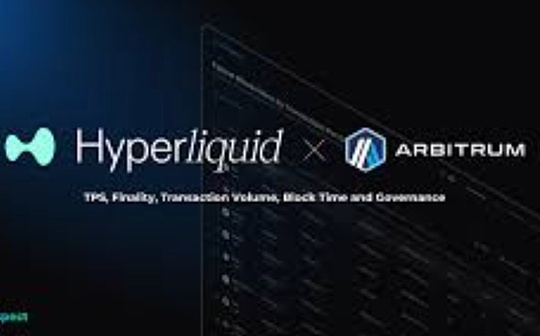
Author: coinmarketcap research & amp; Footprint analytics; Source: vernacular blockchain
The role of Bitcoin in DEFI (decentralized finance) is undergoing tremendous changes.From the initial simply point -to -point transfer, the first cryptocurrency in the world is now gradually rising, becoming a powerful force in the DEFI field, and began to challenge the long -term dominance of Ethereum.
Through the data on the chain, comprehensively interpret the status quo and growth trajectory of the Bitcoin ecosystem, we found a clear picture:BTCFI (combination of Bitcoin and DEFI) is not only a technical change, but also likely to trigger a paradigm change in Bitcoin’s character in DEFI.As we will explore in -depth, the impact of this transformation may redefine the pattern of the entire DEFI field.
01The rise of BTCFI
In 2008, Satoshi Nakamoto launched Bitcoin. The original design purpose was to be an electronic cash system with a point -to -point point.Although this structure has revolutionary significance in the field of encryption assets, there is obvious limitations in more complicated financial applications (such as DEFI).
02The original design of Bitcoin and its limitations in DEFI
Core design elements and its limitations:
1) UTXO model:Bitcoin uses an unprepared transaction output (UTXO) model. This method is effective when dealing with simple transfer, but lacks the flexibility required to support complex smart contracts.
2) Limited script language:Bitcoin’s script language design is limited, mainly to avoid security vulnerabilities.However, this limitation also hinders it that it supports complex DEFI applications because the number of operating codes that can be executed is limited.
3) Lack of Turing completeness:Unlike Ethereum, Bitcoin’s script is not complete by Turing, which makes it difficult to achieve complex smart contracts that depend on state, and these smart contracts are critical to many DEFI protocols.
4) Block size and transaction speed:Bitcoin’s 1MB block size limit and 10 -minute block generation time, which causes its transaction processing speed to be far lower than other blockchain focusing on DEFI.
Although these designs have enhanced the security and decentralization of Bitcoin, they also cause obstacles to the DEFI function directly on the Bitcoin blockchain.Lack of native support for the characteristics of circulation, complex conditions, and status storage makes applications such as DEX, borrowing platforms, or liquidity mining protocols on Bitcoin.
03Early attempts and development of Defi on Bitcoin
Despite these limitations, the strong security and extensive application of Bitcoin have prompted developers to find innovative solutions:
1) Color currency (2012-2013):This is one of the early attempts to expand the Bitcoin function.Color coins “color” and attach unique metadata to a specific Bitcoin to represent and transfer the assets of the real world.Although this is not a real DEFI, it laid the foundation for developing more complicated financial applications on Bitcoin.
2) CountParty (2014):This agreement introduces the ability to create and transaction custom assets on the Bitcoin blockchain, including the first NFT.Counterparty shows the potential for developing more complex financial instruments on Bitcoin.
3) Lightning Network (2015 to the present):Lightning network is a second -layer protocol aimed at improving transaction scalability.It has opened up the possibility of more complicated financial interaction by introducing the payment channel, including some preliminary DEFI applications.
4) Discrete log contract (DLC) (2017 to the present):It is proposed by Tadge Dryja that DLC allows complex financial contracts without changing Bitcoin’s basic layer, providing new possibilities for derivatives and other DEFI tools.
5) liquid network (2018 to the present):This is a side -based settlement network developed by Blockstream. It supports the issuance of encrypted assets and more complicated Bitcoin transactions, paving the way for applications similar to DEFI.
6) Taproot upgrade (2021):By introducing the MAST of the MAST (MAST), Taproot compressed complex transactions into a single hash, reducing transaction costs and reducing memory use.Although it is not a DEFI solution in itself, it improves Bitcoin’s smart contract capabilities and makes complex transactions simpler and efficient, laying the foundation for future Defi development.
The functions of these early development have laid the foundation from simple transfer to more applications.Despite the introduction of DEFI on Bitcoin, these innovations also show the potential of the Bitcoin ecosystem.These foundations have paved the road with the innovative wave of the two -layer solution, side chain, and Bitcoin DEFI. Next, we will explore this field in depth.
04Key innovation: realize smart contracts on Bitcoin
In recent years, multiple agreements have appeared in the Bitcoin ecosystem, which aims to introduce smart contracts and DEFI functions for this world’s first cryptocurrency.These innovations are changing the purpose of Bitcoin, making it not just a value storage or exchange medium.Here are some main protocols that promote Bitcoin to realize smart contracts:
1) Rootstock:As the pioneer of the Bitcoin smart contract, ROOTSTOCK is the longest -run bitcoin side chain, which has become an important foundation for the BTCFI ecosystem.
It uses a Bitcoin 60%computing power to support dual mining, and with Ethereum virtual machine (EVMCompatible, so that Ethereum’s smart contract can run on Bitcoin.The Rootstock’s unique Powpeg mechanism ensures that the seamless conversion between Bitcoin (BTC) and Rootstock Bitcoin (RBTC), and its “depth defense” security model emphasizes simple and stable.
Since the launch of the main network in 2018, the Rootstock’s chain activity has steadily increased, and Footprint Analytics pointed out that it has established a stable and scalable solution status in the Bitcoin ecosystem.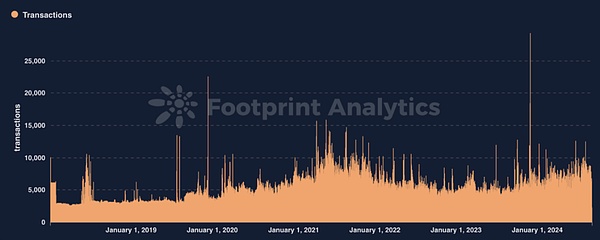 2) Core:Core is a Bitcoin -based blockchain, which is closely combined with Bitcoin and is compatible with Ethereum virtual machine (EVM).
2) Core:Core is a Bitcoin -based blockchain, which is closely combined with Bitcoin and is compatible with Ethereum virtual machine (EVM).
Core is noticeable with its innovative dual betting model, which combines Bitcoin and Core.Through non -custody Bitcoin pledge, Core has established a risk -free yield for Bitcoin, effectively transforming Bitcoin into a benefit asset.Core reports that 55%of Bitcoin mining computing power is entrusted to its network, which helps enhance its security in DEFI applications.
3) Merlin Chain:Merlin Chain is a relatively newer Bitcoin second -layer network. It is dedicated to releasing the DEFI potential of Bitcoin and is getting more and more attention.itThe ZK-RollUP technology, decentralized prophecy machine, and chain anti-fraud module are integrated, providing a set of DEFI functions for Bitcoin holders.Merlin’s M-BTC is a packaging Bitcoin asset that can earn pledge rewards, which has opened a new way for income generation and participation in DEFI.
4) Bevm:BEVM represents an important progress in which Ethereum’s extensive DEFI ecosystem is introduced directly into Bitcoin.As the first Bitcoin second -layer network that is completely decentralized and compatible with EVM,BEVM uses Bitcoin as fuel and allows seamlessly deployed Ethereum decentralized applications (DAPPS) on Bitcoin.BEVM has received the support of the mining giant Bitmain, and created the concept of “computing power RWA”, which may unlock the new value dimension for the Bitcoin ecosystem.
The key innovation of Bitcoin second -layer network and side chain:
Token Hua Bitcoin assets;
Smart contracts and EVM compatibility;
Bitcoin with income;
Extractable and privacy enhancement.
These protocols are not just copying Ethereum DEFI strategies on Bitcoin, but also using the unique characteristics of Bitcoin to open up new directions.From the deep defense mechanism of RootStock, to the dual pledge model of Core, to the comprehensive DEFI solution provided by Merlin and the BEVM’s computing power RWA innovation, the BTCFI field is developing rapidly.
As of September 8, 2024, Bitcoin’s second -layer solution and the total lock value (TVL) of the side chain reached 1.07 billion US dollars,It has increased 5.7 times since January 1, 2024, and has increased by 18.4 times since January 1, 2023.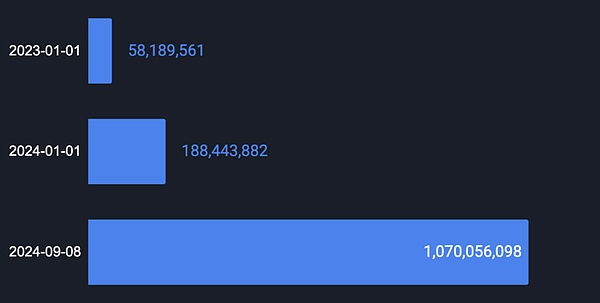
 Core is leading, with 27.6%of the total lock value (TVL), followed by Bitlayer, accounting for 25.6%; Rootstock accounts for 13.8%; Merlin Chain accounts for 11.0%.
Core is leading, with 27.6%of the total lock value (TVL), followed by Bitlayer, accounting for 25.6%; Rootstock accounts for 13.8%; Merlin Chain accounts for 11.0%.
05The status quo of Bitcoin DEFI
With the continuous development of the Bitcoin DEFI ecosystem, some key items emerged at the time of attempt, becoming an important participant and promoting innovation and user adoption.These projects rely on the second -level solution and side chain of Bitcoin to provide various DEFI services:
1) The main BTCFI project
Pell network (multi -chain)
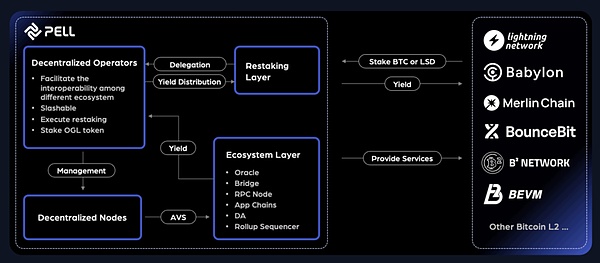
Pell Network is a cross -chain re -pledge agreement to improve the security of the Bitcoin ecosystem and optimize the income.The user obtains returns through pledge Bitcoin or mobile derivatives (LSD), while decentralized operators are responsible for running verification nodes to ensure the security of the network.Pell provides a series of active verification services, such as prediction machines, cross -chain bridges and data availability, supporting a wider Bitcoin second -layer ecosystem.With its strong infrastructure, Pell’s aims to be an important participant to provide liquidity and ensure the security of encrypted economy, and promote the sustainable growth of the Bitcoin economy.
Avalon Finance (multi -chain)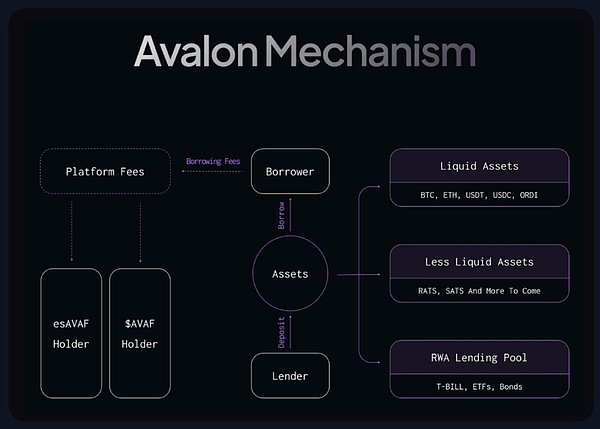 Avalon Finance is a multi -chain DEFI platform that spans Bitlayer, Core, and Merlin Chain. It is known for its comprehensive borrowing and transaction services in the BTC DEFI ecosystem.The main services of Avalon include excess mortgage borrowings of major assets and low -liquidity assets, and have special isolation pools.The platform also integrates derivatives transactions, which enhances its functions of borrowing services.In addition, Avalon also launched a algorithm stable coin designed to optimize capital efficiency and make it a multifunctional and secure DEFI solution in the Bitcoin ecosystem.Its governance Token Avaf uses the ES Token model to provide liquidity to provide and use it.
Avalon Finance is a multi -chain DEFI platform that spans Bitlayer, Core, and Merlin Chain. It is known for its comprehensive borrowing and transaction services in the BTC DEFI ecosystem.The main services of Avalon include excess mortgage borrowings of major assets and low -liquidity assets, and have special isolation pools.The platform also integrates derivatives transactions, which enhances its functions of borrowing services.In addition, Avalon also launched a algorithm stable coin designed to optimize capital efficiency and make it a multifunctional and secure DEFI solution in the Bitcoin ecosystem.Its governance Token Avaf uses the ES Token model to provide liquidity to provide and use it.
Colend Protocol (Core)
Colend Protocol is a decentralized borrowing platform based on the Core blockchain. Users can safely borrow Bitcoin and other assets.By using Core’s dual pledge models, COLEND is seamlessly integrated with a wider Defi ecosystem, which improves the practicality of Bitcoin in DEFI.Its main features include decentralization and unable to tamper -in transactions, the liquidity pool of multiple dynamic interest rates, and a flexible mortgage system.
MoneyOnchain (RootStock)
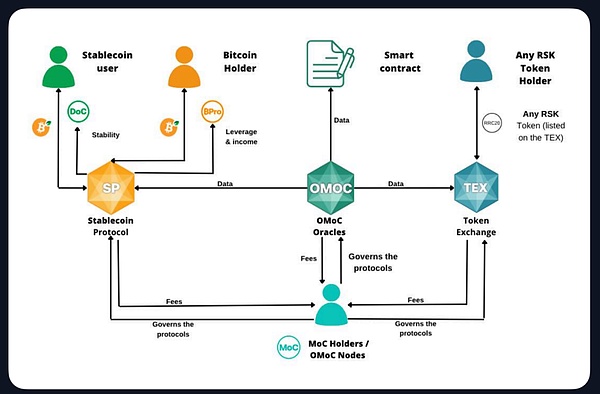 MoneyOnChain is a comprehensive DEFI protocol built on Rootstock, allowing Bitcoin holders to increase asset returns while retaining the full control of the private key.The core of this agreement is to issue a stablecoin called Dollar on Chain (DOC). This is a stable currency mortgaged by Bitcoin. It is designed to designed by users who want to maintain its Bitcoin holding value to the US dollar.EssenceIn addition, MoneyOnchain also provides Token BPro, which can obtain the leverage of Bitcoin, thereby achieving passive returns.
MoneyOnChain is a comprehensive DEFI protocol built on Rootstock, allowing Bitcoin holders to increase asset returns while retaining the full control of the private key.The core of this agreement is to issue a stablecoin called Dollar on Chain (DOC). This is a stable currency mortgaged by Bitcoin. It is designed to designed by users who want to maintain its Bitcoin holding value to the US dollar.EssenceIn addition, MoneyOnchain also provides Token BPro, which can obtain the leverage of Bitcoin, thereby achieving passive returns.
The structure of the protocol is based on the risk -sharing mechanism and adopts a proprietary financial model to cope with the fluctuation of extreme market.At the same time, it also includes decentralized Token trading platform (Tex), decentralized prophecy machine (OMOC), and governance token (MOC). Users can participate in agreement decisions, pledge and obtain rewards.
Sovryn (multi -chain)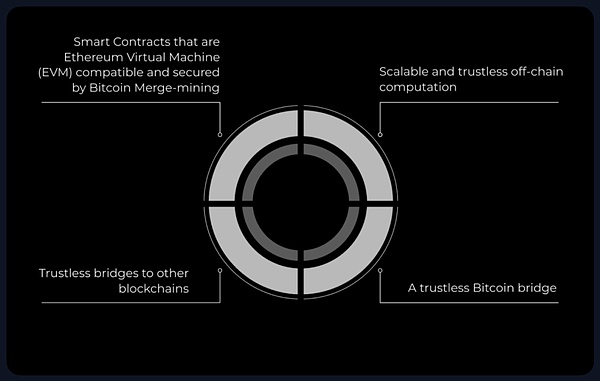 SOVRYN is a DEX, which is also one of the most functional DEFI platforms based on Bitcoin. It aims to allow users to use Bitcoin for transactions, borrow and earn benefits.SOVRYN spans the two platforms of BOB and RootStock, providing a variety of DEFI services, including transaction, exchange, liquidity provision, pledge and borrowing.The platform focuses on creating an universal financial layer for Bitcoin and integrates with other blockchain to make it a unique multi -chain platform in the Bitcoin DEFI ecosystem.
SOVRYN is a DEX, which is also one of the most functional DEFI platforms based on Bitcoin. It aims to allow users to use Bitcoin for transactions, borrow and earn benefits.SOVRYN spans the two platforms of BOB and RootStock, providing a variety of DEFI services, including transaction, exchange, liquidity provision, pledge and borrowing.The platform focuses on creating an universal financial layer for Bitcoin and integrates with other blockchain to make it a unique multi -chain platform in the Bitcoin DEFI ecosystem.
SOVRYN’s governance Token Sov plays a key role in the decentralized agreement through the Bitocracy system management, representing voting rights and rewarding users actively participating.
Solv Protocol (Merlin Chain)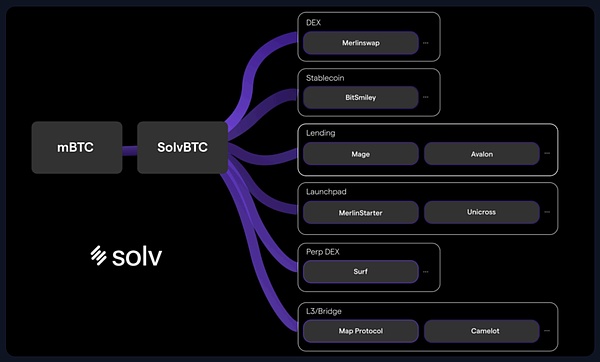 Solv Protocol is at the forefront of NFT’s finance, and users can create, transaction and management chains on the establishment, trading and management chain.The agreement aims to token and aggregate the benefits of various DEFI protocols in the Merlin Chain ecosystemEssenceIts flagship product SOLVBTC is an income token that allows Bitcoin holders to earn income while maintaining liquidity.
Solv Protocol is at the forefront of NFT’s finance, and users can create, transaction and management chains on the establishment, trading and management chain.The agreement aims to token and aggregate the benefits of various DEFI protocols in the Merlin Chain ecosystemEssenceIts flagship product SOLVBTC is an income token that allows Bitcoin holders to earn income while maintaining liquidity.
Solv Protocol is committed to establishing a powerful liquid layer through pledge and other income activities.This flexibility has made it an important Defi project on Merlin Chain to help unlock new financial opportunities in the Bitcoin ecosystem.
These projects highlight the dynamic and rapid development of the Bitcoin DEFI field, and each project contributes unique functions to the coverage of the ecosystem.As of September 8, 2024,Core occupies a leading position in the Bitcoin DEFI space,The number of projects accounted for 25.2%of active projects, further consolidating its core role in the ecosystem.Rootstock and Bitlayer as an important participantEach supports 13.0% of projects, reflects their importance and capital efficiency in improving the liquidity and capital efficiency in improving the Bitcoin DEFI ecosystem.Merlin Chain also played a key role in expanding the Bitcoin DEFI function with a 9.9% project share.Other platforms such as BOB (8.4%), BSQUARD (6.9%) and Stacks (6.1%) contribute to the diversity of ecosystems, while BEVM (5.3%), Bouncebit (3.1%) and Map Protocol (3.1%) (3.1%) (3.1%)) The overall growth is promoted through its professional solution.
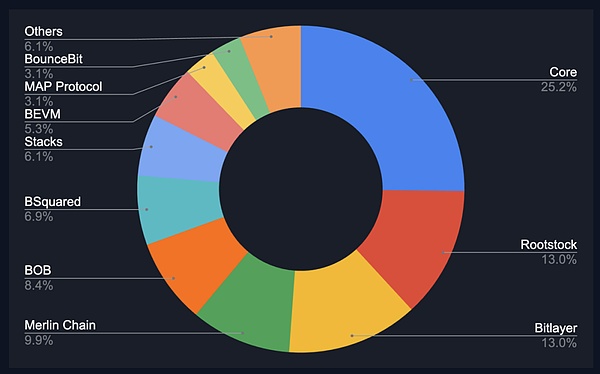
Pell Network has become the leading DEFI project with a total lock value (TVL) of $ 260.8 billion, and it is determined that it is in NFTfinanceLeadership in the field.Avalon Finance and Colend Protocol owned $ 206.2 million and $ 115.5 million, respectively, and were also important participants.Other projects worthy of attention include MoneyOnchain and Sovryn. These projects show the diversity of the BTCFI field, from liquidity mining to stable coins.
2) Key narrative in the main BTCFI project
Safety and decentralization priority:Bitcoin’s DEFI ecosystem is based on security and decentralization.The unparalleled security framework of Bitcoin is the basis of the BTCFI ecosystem to ensure that all innovations follow these basic principles.
Bitcoin as a programmable Token:BTCFI is changing the role of Bitcoin, so that it is not just value storage, but to be programmed token.thisThe use of a change through the use of smart contracts realizes the possibility of a new generation of complex financial applications.For example, Solv Protocol’s Solvbtc is called “the first Bitcoin with benefits”. It provides benefits in the neutral trading strategy in the income library and in DEFI protocols such as Ethereum, Arbitrum and Merlin Chain.
Interoperability of Ethereum:BTCFI builds a bridge through EVM compatibility solutions of the Ethereum Defi ecosystem, making full use of the advantages of the two networks.This interoperability creates a powerful synergy effect, combining Bitcoin’s security with Ethereum’s flexible smart contract capabilities.For example, Core execute smart contracts through EVM, which means that the decentralized application (DAPP) developed by Ethereum can easily transfer to the Core blockchain without required major modifications.
Unlock the capital of Bitcoin:The BTCFI ecosystem is release a large amount of capital for the DEFI purpose, providing income opportunities, and allowing users to retain Bitcoin’s investment opening.This expands the practicality and attraction of Bitcoin in DEFI.
3) Comparison analysis with Ethereum DEFI
With the continuous development of Bitcoin DEFI, it has become increasingly important to compare it with Ethereum DEFI.In particular, we must pay attention to how Bitcoin operates in the Ethereum ecosystem through packaging assets such as WBTC and Renbtc, and what experience lessons can we learn from the development of Ethereum.
4) Ethereum DEFI VS Bitcoin and Native Bitcoin DEFI
The integration of Bitcoin and Ethereum DEFI ecosystem is mainly achieved by packaging assets such as WBTC and RenbTC.These Token enables Bitcoin holders to convert BTC into ERC-20 token, so as to access Ethereum’s huge DEFI ecosystem, which can be used on the Ethereum platforms such as MakerDao, AAVE and Uniswap.
In these two ecosystems, the use of BTC has a significant difference.As of September 8th, the number of BTCs locked in the Ethereum DEFI agreement was 153,400, far exceeding the 08,97,700 in Bitcoin’s native Defi ecosystem.This trend is due to the mature and diverse DEFI infrastructure of Ethereum, which provides broader financial products, including borrowing, transaction and mining.
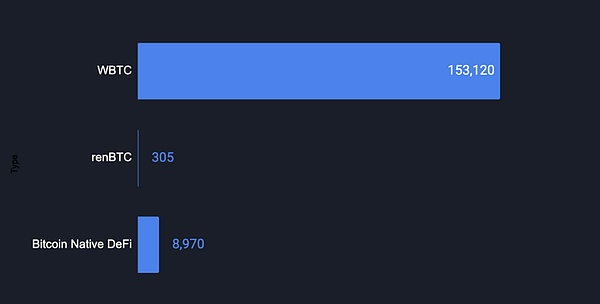 Although the packaging Bitcoin Token such as WBTC allows users to obtain liquidity and higher -level DEFI functions, they also rely on the custodian and cross -chain bridge, which may increase risks.In contrast, although the Native Bitcoin DEFI project is small, it operates within the security framework of Bitcoin itself, avoiding many risks related to cross -chain transfer.However, the Bitcoin DEFI is still in its infancy, and the scope of financial services provided is still limited compared to Ethereum.
Although the packaging Bitcoin Token such as WBTC allows users to obtain liquidity and higher -level DEFI functions, they also rely on the custodian and cross -chain bridge, which may increase risks.In contrast, although the Native Bitcoin DEFI project is small, it operates within the security framework of Bitcoin itself, avoiding many risks related to cross -chain transfer.However, the Bitcoin DEFI is still in its infancy, and the scope of financial services provided is still limited compared to Ethereum.
06The development of Ethereum is the same on the inspiration of Bitcoin and vice versa
1) Bitcoin can learn from Ethereum:
Product diversity:Ethereum’s success in DEFI is largely due to it provided various financial products and services, such as DEX and synthetic assets.In order to promote the development of Bitcoin DEFI, it is necessary to expand its product types, which is not limited to borrowing and stabilizing currency services.Developing more complicated financial tools and interoperability solutions may attract more users.
Developer ecosystem:Ethereum has trained an active developer community, continuously innovated and built new projects on the platform.Bitcoin DEFI projects can also encourage more new agreements and application creations by promoting a more active developer ecosystem to give play to the advantages of Bitcoin.
Mutuality:Ethereum’s DEFI ecosystem performed well in its own and the interoperability of other blockchain.Enhanced Bitcoin DEFI and other chains (including Ethereum) may bring new opportunities to users and allow them to use the advantages of these two ecosystems.
2) Ethereum can learn from Bitcoin:
Security and decentralization:Bitcoin attaches great importance to security and decentralization.The Ethereum project can be inspired from the conservative attitude of Bitcoin to ensure that these core principles are not sacrificed while fast innovation.This is especially important when Ethereum has a more scalability solution (such as Layer 2) transition, because in the process, it is necessary to deal with safety issues carefully.
Simple and stable:Although the script function of Bitcoin is relatively simple and stable, the flexibility is insufficient, making its vulnerabilities less complicated in Ethereum.Ethereum developers can give priority to maintaining simple and stable in smart contract design, thereby reducing security risks.
Follow of value storage:Although Ethereum is known for its smart contract, Bitcoin’s dominance in value storage is still strong.The Ethereum ecosystem can explore methods that enhance their value storage functions. It may attract users who value security and asset preservation by integrating more Bitcoin -based assets.
Although Bitcoin DEFI is still in the early stage, it has significant growth potential if it draws on the experience of Ethereum mature ecosystem.At the same time, Ethereum can also learn from Bitcoin’s advantages in security and decentralization to further consolidate its DEFI products.With the development of these two ecosystems, their cooperation and mutual learning may promote the next growth stage of DEFI.
07Challenge and opportunities
With the continuous development of this area, it is necessary to respond to the obstacles of technology and regulation. At the same time, the fields of technological progress and emerging growth must also bring significant expansion opportunities.
1) Technical obstacles
The development of DEFI on Bitcoin faces many technical challenges.The first is scalability,This is the main problem, because the basic layer of Bitcoin has limited transaction processing capacity due to the limitation of the size and block time of Bitcoin.Unlike Ethereum with a variety of mature Layer 2 solutions, Bitcoin’s Layer 2 and side chain ecosystems are still in its infancy, which limits the scope of DEFI application that can effectively support.
Second, interoperability is also a major challengeEssenceHow to connect Bitcoin and other blockchain ecosystems is quite complicated without affecting security or decentralization, and a solution that needs innovation.
2) Regulatory concerns
With the continuous development of Bitcoin DEFI, regulatory review is expected to intensify.Government and financial regulatory agencies may impose more stricter regulations on DEFI services, especially in AML and KYC.CompareThe decentralization and pseudo -anonymous characteristics of coins make complications complicated, which may affect the use and development of Bitcoin DEFI.Therefore, finding a balance in these regulatory environments is essential for the sustainable growth of Bitcoin DEFI.
08Future opportunities
1) Technological progress
Bitcoin DEFI has a lot of room for technical progress.Improve Layer 2 solutions, such as more efficient and secure side chains, and developing more scalability and interoperability frameworks, which may significantly improve the ability of the Bitcoin DEFI ecosystem.In addition, the advancement of the hidden log contract (DLCS) and privacy protection technology (such as zero knowledge certificate) may make more complicated and secure financial applications a reality.
2) Forecast in the field of growth in the future
With the continuous maturity of the Bitcoin DEFI ecosystem, many fields have shown strong growth potential.Products, DEX and cross -chain liquidity pools that are expected to generate income will attract more and more attention.At the same time, as the institution’s interest in Bitcoin continues to increase,DEFI products, such as custody solutions, compliance financial instruments, and stable coins supported by Bitcoin, are expected to have higher demand.These developers have provided high -investment return opportunities for early adopors and innovators in the Bitcoin DEFI field.
09in conclusion
Looking forward to the future, the Bitcoin DEFI ecosystem will continue to expand with the promotion of technological progress and the interest of agency interest.Development more scalability Layer2 solutions, enhance interoperability, and launch more complicated financial products are vital to this expansion.With the maturity of the ecosystem, products, DEX and DEFI services for institutions are expected to generate income will attract a lot of attention and funds.
However, this growth will also face challenges,In particular, in response to the changing regulatory environment and overcoming technical problems related to scalability and security.Solving these problems is essential for maintaining the growth momentum of Bitcoin DEFI and ensuring its long -term success.
In short, the future of Bitcoin DEFI seems to be full of hope and has rich opportunities for innovation and growth.With the continuous evolution of the ecosystem, it has the potential to have a profound impact on the entire Defi ecosystem, and makes Bitcoin the core participant of Defi.

